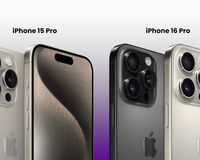The iPhone 17 Pro and Pro Max are Apple’s newest flagships, boasting a bold anodized aluminum frame, aerospace-grade alloy, and new vibrant finishes. But barely weeks after launch, a controversy has emerged: “scratch-gate.”
Demo units in Apple Stores show visible marks near the MagSafe charging area, while YouTube durability testers point to weaknesses on the camera plateau edges. For Apple fans who rely on trade-in programs to finance upgrades, this cosmetic issue could impact resale prices and shake up the second-hand iPhone market.

Scratches at Apple Stores: MagSafe or Material Flaw?
Shoppers quickly noticed that iPhone 17 Pro demo units in Apple Stores were showing scuffs around the MagSafe charging area. Since those units are handled by hundreds (sometimes thousands) of customers per day and locked into metal charging stands, it raised the question: Would customer-owned iPhones scratch the same way?
According to Apple, the answer is no.
-
The company says the marks on store models are not scratches, but rather material transfer from worn MagSafe stands.
-
Apple clarified the residue can be wiped off, and it is already replacing the stands to prevent further issues.
-
Apple also noted that even some iPhone 16 demo units showed similar marks, reinforcing that this is a display issue, not a flaw in the 17 Pro itself.
JerryRigEverything’s Scratch Test: The Real Weak Spot
YouTuber JerryRigEverything put the iPhone 17 Pro through his now-famous scratch tests. His results were reassuring in some ways, but highlighted a very specific vulnerability:
-
The anodized aluminum finish is extremely scratch-resistant across most of the phone, including around the MagSafe cutout.
-
Everyday items like keys and coins don’t scratch the body or MagSafe ring at all.
-
The weak spot? The camera plateau edges. Apple chose sharp, raised edges instead of chamfered or rounded corners. The anodized coating doesn’t adhere well to these sharp points, meaning the edges chip easily under light abrasion.
So while Apple Store units show MagSafe “scratches” (actually scuffs from stands), real-world owners are more likely to see wear around the camera bump edges.
Apple’s Official Response
When pressed about durability, Apple emphasized several key points:
-
The iPhone 17 Pro uses aerospace-grade 7000-series aluminum alloy with an anodization layer that exceeds industry standards for hardness.
-
The edges of the camera plateau have “similar characteristics” to edges on other Apple products, like MacBooks and previous iPhones.
-
Apple says normal wear and tear, including small abrasions, should be expected over time.
-
The company insists its products undergo rigorous real-world durability tests, including scratch, drop, and abrasion testing, before launch.
In short: Apple acknowledges that scratches may happen, but frames it as a normal and expected part of ownership.
Why Scratches Matter for iPhone Trade-In Value
Cosmetic damage may not affect functionality, but it can absolutely affect your wallet at trade-in time.
-
Grading is strict. A small scratch can drop your iPhone 17 Pro from “Like New” to “Good,” cutting 10–20% off trade-in offers.
-
Market perception matters. Dealers like Apple Trade In, carriers, and refurbishers (Back Market, Gazelle, etc.) may lower iPhone 17 Pro resale pricing if cosmetic flaws become widespread.
-
Consumer confidence. If buyers believe the 17 Pro scratches easily, resale demand may shift toward more durable models.
That means iPhone 17 Pro trade-in values may decline faster than usual, especially compared to last year’s titanium-framed iPhone 16 Pro.

iPhone 16 Pro: The Unexpected Winner
Ironically, the iPhone 16 Pro and Pro Max could benefit from scratch-gate.
-
Titanium > Aluminum. The 16 Pro’s titanium frame is tougher and more scratch-resistant than the 17 Pro’s aluminum.
-
Resale advantage. Expect the iPhone 16 Pro trade-in value to stay stronger than usual, as refurbishers and buyers recognize its durability edge.
-
Demand shift. Good-condition 16 Pro units could see higher resale prices and tighter availability as savvy buyers seek them out.
In other words: in 2025, the best iPhone to trade in might not be the newest one, but the most durable one.
How to Protect Your iPhone 17 Pro’s Trade-In Value
If you’ve already bought the iPhone 17 Pro, here’s how to preserve its resale price:
-
Use a case with raised edges around the camera plateau to protect sharp corners.
-
Consider a skin or wrap if you prefer a slim profile—these hide chips and prevent further damage.
-
Apply screen and back protectors. Spending a little now could save you hundreds at trade-in.
The Bigger Picture: Design, Durability, and Resale
The iPhone 17 Pro is still one of the most durable iPhones ever made. Its unibody aluminum build is stronger than glass, its Ceramic Shield 2 front is the toughest Apple has shipped, and structural rigidity is excellent.
But design choices matter. Apple’s decision to go with sharp anodized edges creates a cosmetic weak spot that could ripple across the iPhone trade-in and resale ecosystem:
-
Lower resale values for the iPhone 17 Pro.
-
Stronger resale performance for the iPhone 16 Pro.
-
A new reminder that Apple’s pursuit of style sometimes carries a hidden cost.

Final Thoughts
It wouldn’t be a new iPhone launch without a little drama. “Scratch-gate” may turn out to be more of a cosmetic annoyance than a fatal flaw, but for resale-conscious buyers, it matters.
-
If you’re upgrading yearly through trade-ins, protect your iPhone 17 Pro now.
-
If you own a titanium iPhone 16 Pro, hold onto it—it could be the resale winner of 2025.
-
And if you’re buying refurbished, weigh not just specs, but durability and resale value too.
Because in today’s market, scratches aren’t just cosmetic—they’re financial.

![The Best iPhones for battery life ranked [2025]](http://reboxed.co/cdn/shop/articles/IPHONE-BATTERY_e2de6230-b1d2-4348-ac33-e47d1e267bdd_100x80_crop_center@2x.jpg?v=1738489925)






